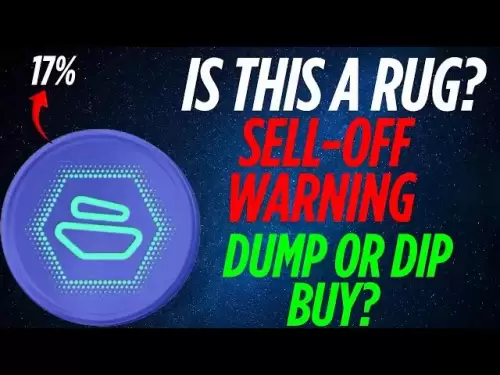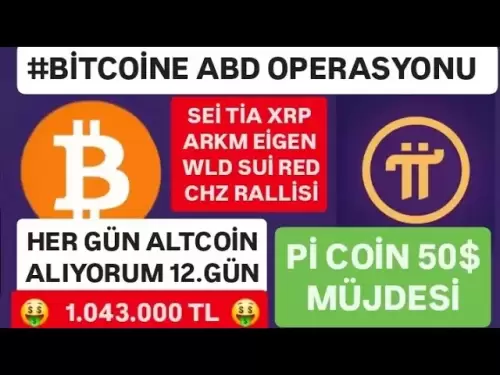-
 Bitcoin
Bitcoin $107,810.8710
-1.45% -
 Ethereum
Ethereum $2,531.4386
-1.75% -
 Tether USDt
Tether USDt $1.0000
-0.03% -
 XRP
XRP $2.2542
-0.99% -
 BNB
BNB $659.1350
-0.50% -
 Solana
Solana $148.5456
-2.40% -
 USDC
USDC $0.9999
-0.02% -
 TRON
TRON $0.2868
-0.44% -
 Dogecoin
Dogecoin $0.1666
-3.65% -
 Cardano
Cardano $0.5751
-2.36% -
 Hyperliquid
Hyperliquid $37.6845
-5.51% -
 Bitcoin Cash
Bitcoin Cash $494.9448
-0.65% -
 Sui
Sui $2.8396
-3.31% -
 Chainlink
Chainlink $13.2423
-2.59% -
 UNUS SED LEO
UNUS SED LEO $9.0482
0.02% -
 Stellar
Stellar $0.2467
-2.44% -
 Avalanche
Avalanche $17.8165
-3.63% -
 Shiba Inu
Shiba Inu $0.0...01158
-2.41% -
 Toncoin
Toncoin $2.7397
-3.42% -
 Hedera
Hedera $0.1560
-2.73% -
 Litecoin
Litecoin $85.8559
-2.34% -
 Monero
Monero $315.3710
-2.30% -
 Dai
Dai $1.0001
0.00% -
 Polkadot
Polkadot $3.3443
-2.03% -
 Ethena USDe
Ethena USDe $1.0001
0.01% -
 Bitget Token
Bitget Token $4.2888
-3.73% -
 Uniswap
Uniswap $7.3388
-1.57% -
 Aave
Aave $278.2986
-3.05% -
 Pepe
Pepe $0.0...09807
-3.67% -
 Pi
Pi $0.4563
-2.39%
What is Bitfinex's contract liquidation mechanism?
Bitfinex's liquidation mechanism closes leveraged positions at the best market price when equity falls below the maintenance margin, aiming to minimize losses for traders and the exchange.
Apr 18, 2025 at 03:14 am
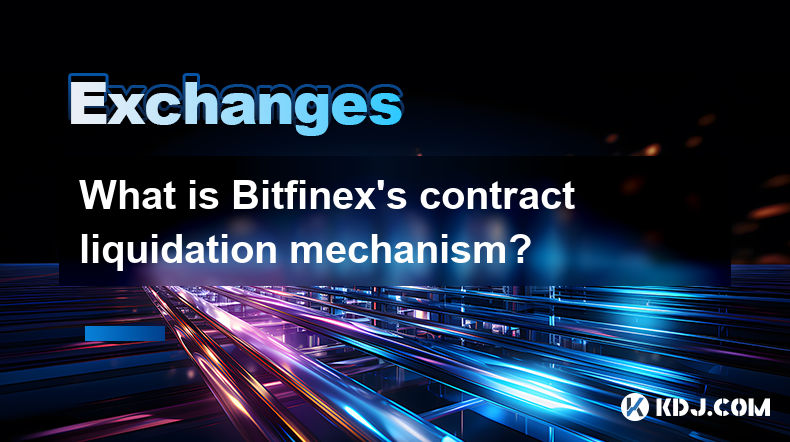
Bitfinex, one of the leading cryptocurrency exchanges, employs a sophisticated contract liquidation mechanism designed to manage risk and maintain market stability. This mechanism is crucial for traders using leveraged positions, as it helps prevent the platform from incurring significant losses due to market volatility. Understanding how Bitfinex's contract liquidation works is essential for any trader looking to navigate the complexities of leveraged trading on this platform.
The Basics of Leveraged Trading on Bitfinex
Leveraged trading allows traders to open positions larger than their actual capital by borrowing funds from the exchange. On Bitfinex, traders can use leverage to amplify their potential profits, but this also increases the risk of substantial losses. When a trader's position moves against them, and their account equity falls below the maintenance margin requirement, the liquidation process is triggered.
The Role of Maintenance Margin
The maintenance margin is a critical component in Bitfinex's risk management system. It represents the minimum amount of equity a trader must maintain in their account to keep their leveraged positions open. If a trader's equity drops below this threshold, Bitfinex initiates the liquidation process to close the position and recover the borrowed funds.
How Liquidation Works on Bitfinex
When a trader's account equity falls below the maintenance margin, Bitfinex's system automatically begins the liquidation process. The platform uses a liquidation engine to close the trader's position at the best available market price. This process aims to minimize losses for both the trader and the exchange. The liquidation engine works as follows:
- Monitoring Account Equity: Bitfinex continuously monitors the equity in each trader's account.
- Triggering Liquidation: If the equity falls below the maintenance margin, the liquidation process is triggered.
- Executing Liquidation: The liquidation engine places orders to close the trader's position at the best available market price.
- Recovering Funds: The proceeds from the liquidation are used to repay the borrowed funds, and any remaining equity is returned to the trader's account.
The Impact of Liquidation on Traders
Liquidation can have significant consequences for traders. If the market moves rapidly against a trader's position, they may face a total loss of their invested capital. It's crucial for traders to understand the risks associated with leveraged trading and to use appropriate risk management strategies, such as setting stop-loss orders and monitoring their positions closely.
Strategies to Avoid Liquidation
To minimize the risk of liquidation, traders can employ several strategies:
- Use Lower Leverage: Trading with lower leverage reduces the likelihood of a margin call and subsequent liquidation.
- Set Stop-Loss Orders: Placing stop-loss orders can help limit potential losses and prevent positions from reaching the liquidation threshold.
- Monitor Positions: Regularly monitoring market conditions and adjusting positions accordingly can help traders stay ahead of potential liquidation events.
- Maintain Sufficient Margin: Keeping account equity well above the maintenance margin requirement provides a buffer against market volatility.
Understanding Liquidation Fees
Bitfinex charges a liquidation fee to cover the costs associated with managing the liquidation process. This fee is typically a small percentage of the liquidated position's value. Traders should be aware of these fees, as they can impact the final amount of equity returned to their account after liquidation.
The Importance of Risk Management
Effective risk management is crucial for traders using leveraged positions on Bitfinex. By understanding the platform's liquidation mechanism and employing appropriate risk management strategies, traders can better navigate the challenges of leveraged trading. This includes setting realistic profit targets, managing position sizes, and being prepared for sudden market movements.
Real-World Examples of Liquidation on Bitfinex
To illustrate how liquidation works in practice, consider the following hypothetical scenario:
- A trader opens a long position on Bitcoin with 10x leverage, borrowing funds from Bitfinex to amplify their potential profits.
- The market moves against the trader, and their account equity drops below the maintenance margin.
- Bitfinex's liquidation engine automatically closes the trader's position at the best available market price.
- The proceeds from the liquidation are used to repay the borrowed funds, and any remaining equity is returned to the trader's account.
This example highlights the importance of understanding and preparing for the risks associated with leveraged trading on Bitfinex.
Frequently Asked Questions
Q: Can I avoid liquidation by depositing more funds into my account?
A: Yes, depositing additional funds into your account can increase your equity and potentially prevent liquidation. However, it's essential to act quickly, as market conditions can change rapidly.
Q: What happens if there is insufficient liquidity to close my position during liquidation?
A: If there is insufficient liquidity, Bitfinex's liquidation engine may take longer to close your position, potentially resulting in a larger loss. The platform prioritizes closing positions at the best available market price to minimize losses.
Q: Are there any warning signs that my position is at risk of liquidation?
A: Yes, Bitfinex provides real-time monitoring of your account equity and will send notifications if your equity approaches the maintenance margin. It's crucial to pay attention to these warnings and take action to prevent liquidation.
Q: Can I appeal a liquidation if I believe it was unfair?
A: Bitfinex has a customer support team that can review liquidation events. However, liquidations are typically automated and based on predefined rules, so appeals are rarely successful unless there was a clear error on the platform's part.
Disclaimer:info@kdj.com
The information provided is not trading advice. kdj.com does not assume any responsibility for any investments made based on the information provided in this article. Cryptocurrencies are highly volatile and it is highly recommended that you invest with caution after thorough research!
If you believe that the content used on this website infringes your copyright, please contact us immediately (info@kdj.com) and we will delete it promptly.
- Meme Coins 2025: Presale Surge and ETF Hopes?
- 2025-07-08 12:30:11
- Gate.io, Pump.fun, and the Mysterious Token Sale: What's the Deal?
- 2025-07-08 12:30:11
- Pi Coin Price Prediction Today: Is a Breakout Imminent?
- 2025-07-08 12:50:11
- XRP, Breakout, and Altcoins: Navigating the Crypto Rollercoaster
- 2025-07-08 12:50:11
- BlockDAG Leads the Web3 Race with Sports Partnerships and Strategic Pricing
- 2025-07-08 10:50:12
- Pepe, Dogecoin, Shiba Inu: Meme Coin Mania or Calculated Crypto?
- 2025-07-08 10:30:12
Related knowledge
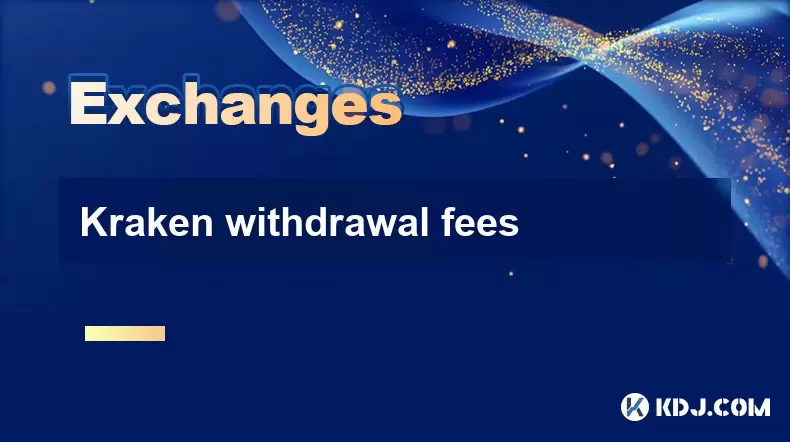
Kraken withdrawal fees
Jul 08,2025 at 01:07pm
Understanding Kraken Withdrawal FeesKraken is one of the most trusted cryptocurrency exchanges in the world, offering a wide range of digital assets and services. One key aspect users often focus on when using Kraken is withdrawal fees. These fees can vary depending on the cryptocurrency, network congestion, and the method used to withdraw funds. It’s e...
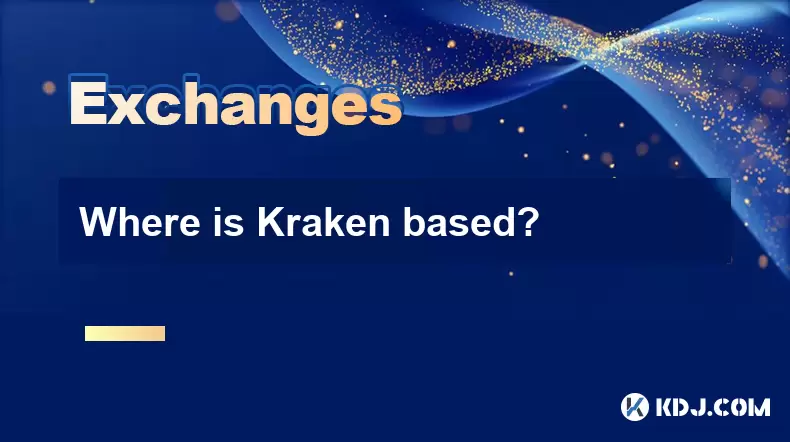
Where is Kraken based?
Jul 08,2025 at 12:00pm
What is Kraken?Kraken is one of the most established and trusted cryptocurrency exchanges in the world. Founded in 2011, it has grown to become a go-to platform for traders seeking reliability, security, and advanced trading tools. The exchange supports a wide variety of cryptocurrencies, including Bitcoin (BTC), Ethereum (ETH), Litecoin (LTC), and many...
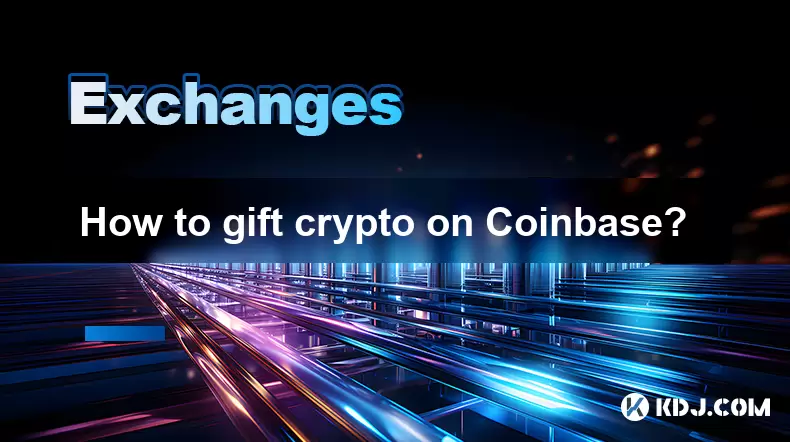
How to gift crypto on Coinbase?
Jul 08,2025 at 01:49pm
Understanding the Basics of Gifting Crypto on CoinbaseGifting cryptocurrency through Coinbase is a unique and modern way to share digital assets with friends or family. Before diving into the process, it's essential to understand what gifting crypto entails. When you gift crypto, you're essentially sending a specific amount of digital currency to anothe...
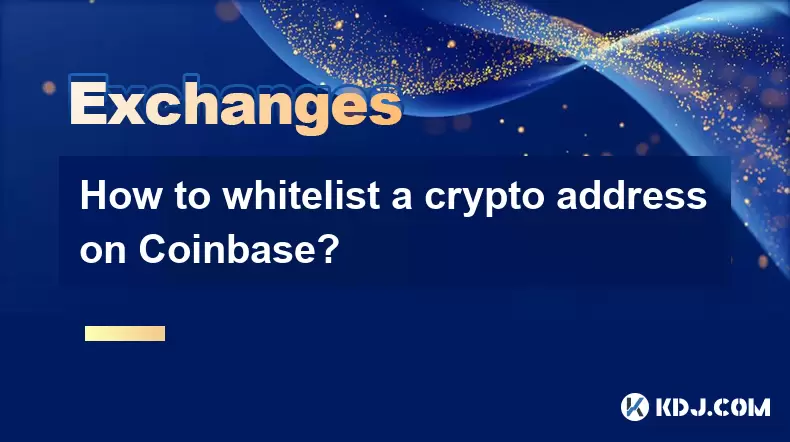
How to whitelist a crypto address on Coinbase?
Jul 08,2025 at 01:21pm
Understanding the Concept of Whitelisting a Crypto AddressWhitelisting a crypto address refers to the process of allowing specific wallet addresses to interact with your account or platform. In the context of Coinbase, this feature is primarily used for enhancing security and controlling which external wallets can receive funds from your Coinbase accoun...
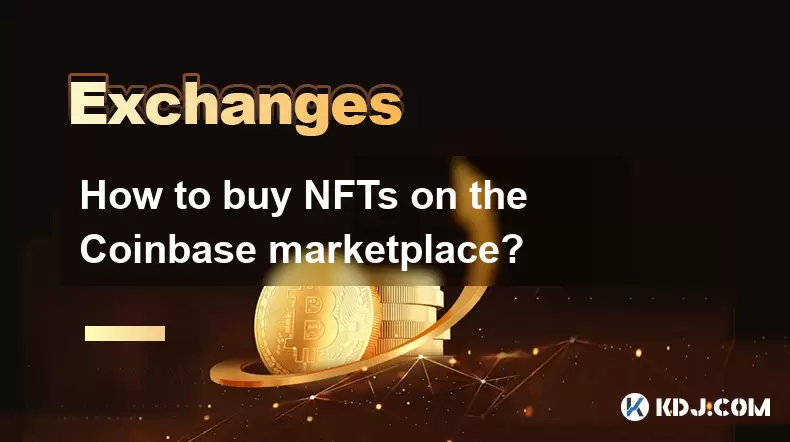
How to buy NFTs on the Coinbase marketplace?
Jul 08,2025 at 12:28pm
Understanding the Basics of NFTs and Coinbase MarketplaceBefore diving into how to buy NFTs on the Coinbase marketplace, it's crucial to understand what NFTs are. Non-fungible tokens (NFTs) are unique digital assets that represent ownership of a specific item or content, often linked to digital art, collectibles, music, or virtual real estate. The Coinb...
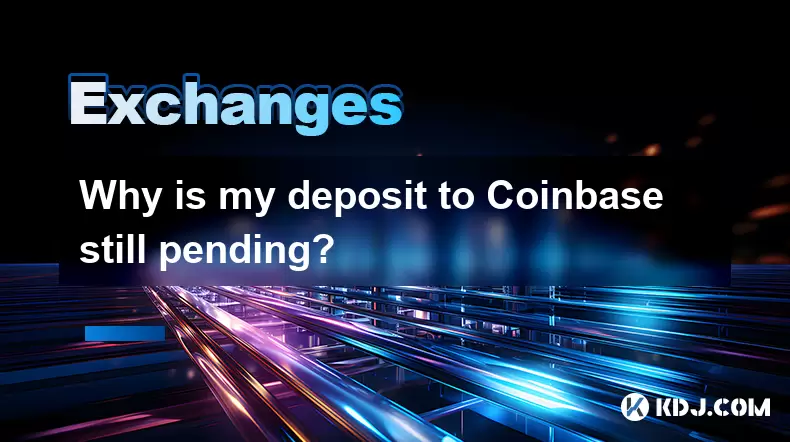
Why is my deposit to Coinbase still pending?
Jul 08,2025 at 11:14am
Understanding Pending Deposits on CoinbaseIf you've initiated a deposit to your Coinbase account and it's showing as pending, there could be several reasons behind this status. A pending deposit typically means that the transaction has been broadcasted or initiated but hasn't yet received enough confirmations from the blockchain network to be finalized....

Kraken withdrawal fees
Jul 08,2025 at 01:07pm
Understanding Kraken Withdrawal FeesKraken is one of the most trusted cryptocurrency exchanges in the world, offering a wide range of digital assets and services. One key aspect users often focus on when using Kraken is withdrawal fees. These fees can vary depending on the cryptocurrency, network congestion, and the method used to withdraw funds. It’s e...

Where is Kraken based?
Jul 08,2025 at 12:00pm
What is Kraken?Kraken is one of the most established and trusted cryptocurrency exchanges in the world. Founded in 2011, it has grown to become a go-to platform for traders seeking reliability, security, and advanced trading tools. The exchange supports a wide variety of cryptocurrencies, including Bitcoin (BTC), Ethereum (ETH), Litecoin (LTC), and many...

How to gift crypto on Coinbase?
Jul 08,2025 at 01:49pm
Understanding the Basics of Gifting Crypto on CoinbaseGifting cryptocurrency through Coinbase is a unique and modern way to share digital assets with friends or family. Before diving into the process, it's essential to understand what gifting crypto entails. When you gift crypto, you're essentially sending a specific amount of digital currency to anothe...

How to whitelist a crypto address on Coinbase?
Jul 08,2025 at 01:21pm
Understanding the Concept of Whitelisting a Crypto AddressWhitelisting a crypto address refers to the process of allowing specific wallet addresses to interact with your account or platform. In the context of Coinbase, this feature is primarily used for enhancing security and controlling which external wallets can receive funds from your Coinbase accoun...

How to buy NFTs on the Coinbase marketplace?
Jul 08,2025 at 12:28pm
Understanding the Basics of NFTs and Coinbase MarketplaceBefore diving into how to buy NFTs on the Coinbase marketplace, it's crucial to understand what NFTs are. Non-fungible tokens (NFTs) are unique digital assets that represent ownership of a specific item or content, often linked to digital art, collectibles, music, or virtual real estate. The Coinb...

Why is my deposit to Coinbase still pending?
Jul 08,2025 at 11:14am
Understanding Pending Deposits on CoinbaseIf you've initiated a deposit to your Coinbase account and it's showing as pending, there could be several reasons behind this status. A pending deposit typically means that the transaction has been broadcasted or initiated but hasn't yet received enough confirmations from the blockchain network to be finalized....
See all articles

























